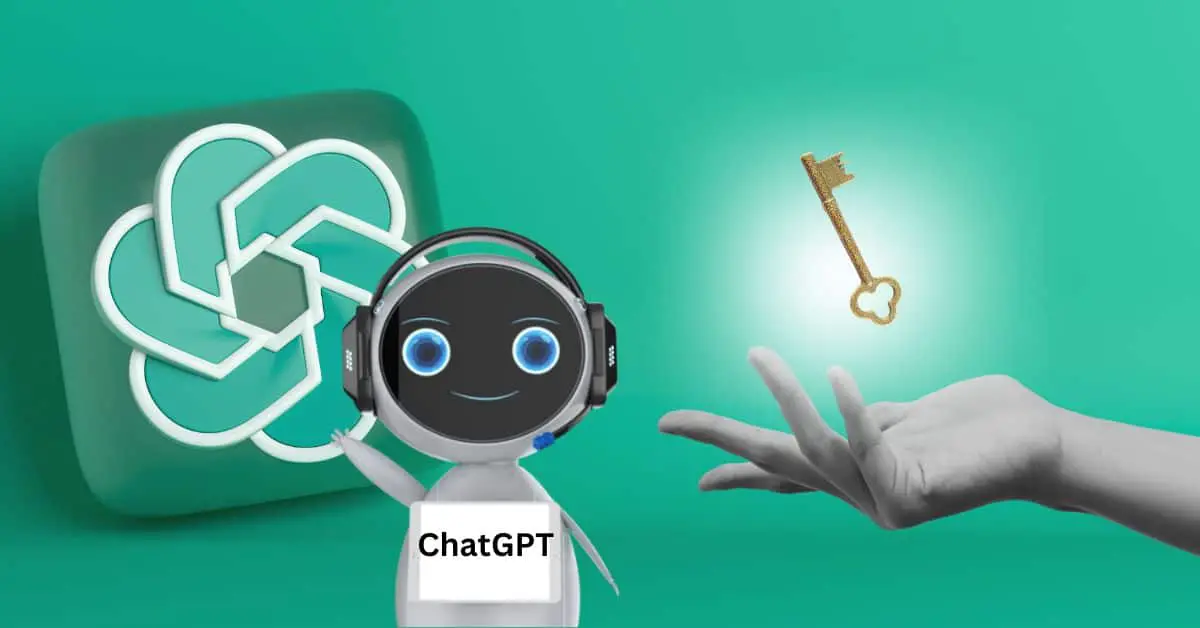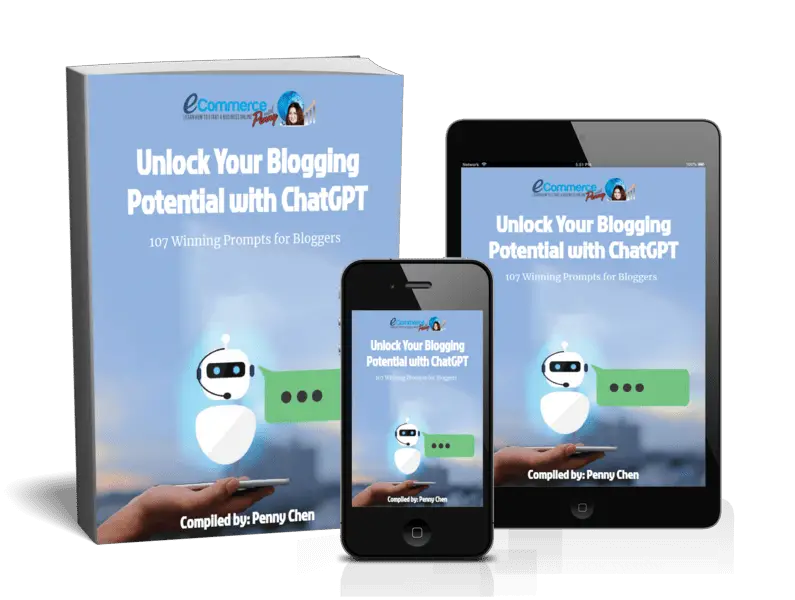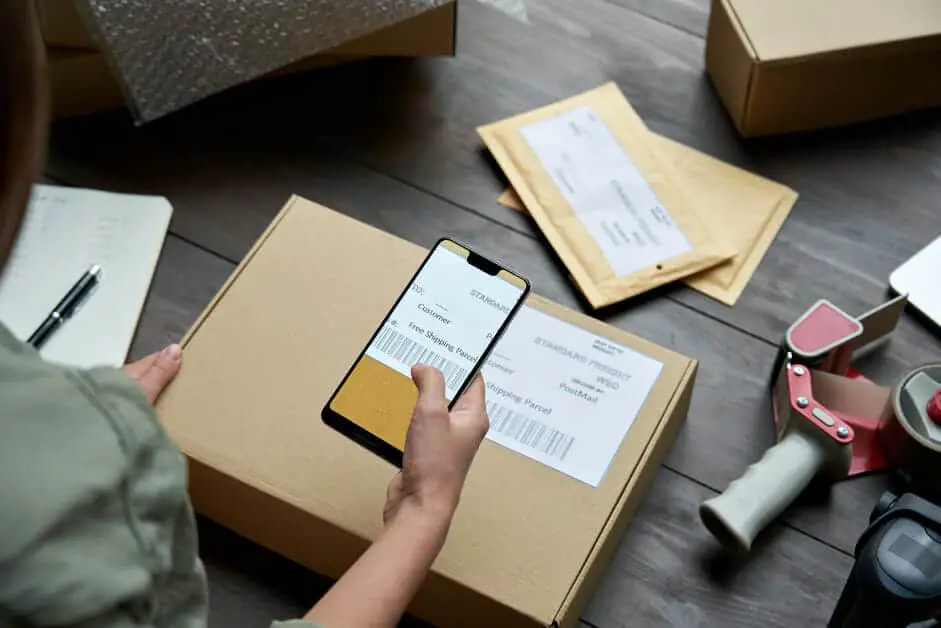Awesome ChatGPT Prompts: The Key to Unlocking the Power of ChatGPT
Are you looking to take your AI-powered conversations to the next level? Then, you need to write ChatGPT prompts effectively. These prompts are the key to unlocking the full potential of ChatGPT, the powerful language model that can generate human-like responses to text inputs.
In this blog post, we'll explore why awesome ChatGPT prompts matter and how to create them effectively. Get ready to learn how to unlock the power of ChatGPT and take your AI conversations to new heights.
DISCLOSURE: Some of the links that I share in this article ARE my affiliate links. This means I may earn a commission, at no extra cost to you. In fact, sometimes you'll get a discount or free credits just FOR using my link. 🙂
What is a Prompt?
A prompt is an input given to a language model like ChatGPT that serves as the starting point for a conversation. It can be as simple as a single question or statement, or it can be more complex such as providing context about characters or settings for the AI to use when creating its response.
The Role of Prompts in ChatGPT
Prompts act as a guide for conversations with ChatGPT, providing the model with context and guidance on what kind of responses to generate. The quality of prompts is essential in ensuring that the conversation has a natural flow. A well-crafted prompt gives ChatGPT more information about the expected response, allowing it to generate more accurate and human-like responses.
Just like Thomas J. Watson, the founder of IBM, once said, “The ability to ask the right question is more than half the battle of finding the answer.”, if you can ask the right questions, you can ensure that ChatGPT builds the right responses and carries out conversations naturally.
Prompts are thus essential for leveraging the full potential of ChatGPT and crafting engaging conversations with humans.
Benefits of Learning to Write ChatGPT Prompts
The ability to write effective ChatGPT prompts can pay off in several ways.
Improved accuracy and relevance of generated text
When you write great ChatGPT prompts, you are providing the model with more information about the expected response. This allows ChatGPT to generate more accurate and relevant responses that are tailored to the context of the conversation. The result is more natural conversations and a better user experience overall.
Increased efficiency and productivity in using ChatGPT for various tasks
Writing great ChatGPT prompts also allows you to save time and effort in monitoring conversations and manually adjusting prompts. This increases the efficiency of using ChatGPT for various tasks, allowing you to focus on creating more engaging conversations with your users.
Enhanced creativity and flexibility in generating diverse types of content
When you use awesome ChatGPT prompts, you are also giving the model more flexibility to generate diverse types of content. This can help spark creativity in your conversations and allow you to explore new topics with ease.
Types of ChatGPT Prompts
Now that we've explored why awesome ChatGPT prompts matter, let's look at some of the different types of prompts you can use to get the most out of ChatGPT.
Open-ended questions
These prompts are designed to elicit open-ended responses from ChatGPT, allowing it to generate creative and unique responses based on the input. Open-ended questions are great for sparking natural conversations and encouraging your AI bot to explore various topics.
For example, “Tell me about your favorite vacation.” These types of prompts can be anything from “What do you think about x?” to “What would you do in this situation?”
Closed-ended prompts
These prompts are designed to elicit specific, limited responses from ChatGPT. Closed-ended prompts often need ChatGPT to generate a yes or no response. These types of prompts are great for when you want your AI bot to confirm information or ask for clarification on a topic.
For example, “What is the capital of France?” These can also be phrased as a yes or no question, such as “Do you think it would be a good idea to do X?”
Multiple-choice prompts
These prompts present ChatGPT with a set of options and ask it to select the most appropriate response. Multiple-choice prompts can be used when you want your AI bot to make a decision or choose an option from a list of options. For example, “Which of these is a type of fruit? A) Carrot B) Banana C) Potato”
These types of prompts are great for when you want the AI to learn more about its users and provide tailored responses based on their preferences.
Conditional prompts
These prompts are designed to elicit responses from ChatGPT based on specific conditions. They often involve presenting a set of options and asking the AI bot to select the most appropriate response based on certain criteria.
For example, “If you could have any superpower, which one would you choose?” This type of prompt allows ChatGPT to explore different scenarios and generate creative responses based on the user's input.
Factual questions
These prompts are designed to ask for factual information from ChatGPT. Factual questions are more focused, providing the model with specific information that allows it to generate a precise and limited response, such as a definition or piece of knowledge. For example, “What is the population of China?”
You need to note that ChatGPT has limitations in that it may occasionally generate incorrect information and only has limited knowledge of the world and events after 2021. Thus, you would need to verify and fact-check the response generated.
Persuasive prompts
These prompts are designed to persuade ChatGPT to take a specific action or adopt a specific viewpoint. They often involve presenting an argument and asking the AI bot to make a decision based on its understanding of the situation.
For example, “Convince me why I should switch to a vegan diet.” Another example would be, “Why should people buy this product?” These types of prompts can be used to generate more convincing conversations that may lead to better sales results.
Contextual prompts
These prompts are designed to provide context and help ChatGPT generate more focused responses. Contextual prompts often involve presenting a scenario or providing some background information and asking the AI bot to suggest an appropriate action or solution.
These prompts take into account the context of the conversation, such as the user's previous responses or the current topic being discussed. They can help make the conversation feel more natural and personalized.
For example, “You're lost in a forest with no food or water. What should you do?” This type of prompt helps ChatGPT generate more specific responses based on the context provided.
I find that by using this type of prompt ChatGPT can usually produce better output tailored to your specific situation.
Task-oriented prompts
Task-oriented prompts are designed to help ChatGPT complete a specific task. They often involve providing some initial information and asking the AI bot to take the next steps in completing whatever assignment it was given.
For example, “I need help creating a budget.” This type of prompt helps provide direction for the conversation and can be used to help ChatGPT generate more accurate results.
These prompts can also be used to generate responses that help to elicit a specific action or behavior from the user. For example, a task-oriented prompt might ask ChatGPT to generate an email that entices the reader to buy or sign up for a newsletter.
Tips for Writing Awesome ChatGPT Prompts
So, how do you create awesome ChatGPT prompts? There are a few key elements that should be included in any good prompt:
Clarity and specificity in defining the desired output
It's important to be specific when crafting your prompt. You should make all expectations clear so that ChatGPT can generate a response tailored to the request.
For example, if you want ChatGPT to generate a description of an object, provide details such as size, color, and material, so it can deliver an accurate response.
Keeping prompts concise and to the point
The best prompts are succinct and direct and avoid unnecessary wording. Too much information or too many details can make it difficult for ChatGPT to comprehend the prompt, resulting in an inaccurate response.
Incorporating relevant context and information into the prompt
It's also important to provide all necessary information upfront so that ChatGPT can understand the situation better and create a complete and accurate response. Make sure that the prompt contains any information or context needed for ChatGPT to complete the task.
This is especially important if the prompt involves more complex scenarios like persuasive prompts or tasks that take multiple steps. By providing all relevant information upfront, you can help ensure that ChatGPT can generate the best possible response.
Understanding the limitations and biases of NLP models like ChatGPT
As mentioned earlier, there are limitations to ChatGPT. It's important to be aware of its limitations, such as it may make up things and make them sound convincing (some call it “hallucination“).
Because ChatGPT is based on natural language processing (NLP) models and machine learning algorithms, it can inherit the biases from the data used to train them. So be sure to vet its responses for any potential biases or offensive content before using them.
Combining a series of different prompts into workflows
Finally, one of the best ways to use ChatGPT is to combine multiple prompts into workflows. You can do this by using different types of prompts, such as conditional, factual, etc. shared earlier.
By crafting a series of thoughtful prompts, you can probe ChatGPT and refine its outputs to help provide you with helpful responses. For example, I use ChatGPT in my blogging to help combat writer's block.
I would start with an idea of roughly what I want to write about. I then ask ChatGPT to suggest a title for a blog post about the topic. After that, I would ask ChatGPT to suggest an outline for the blog title and so on.
For more tips on creating awesome ChatGPT prompts, be sure to download my FREE e-guide “11 tips on how to write better prompts for ChatGPT to get better responses”.
Get more suggestions in one go
Once you have a basic understanding of how to craft awesome ChatGPT prompts, you can leverage the power of computing by getting ChatGPT to provide you with many options at once.
For example, instead of asking it to suggest a title for my blog post, I could ask for 5 blog post titles to be generated at once and then select the best one out of them.
Another way you can write better prompts
Apart from creating prompts from scratch yourself, another way you can craft awesome ChatGPT prompts is to make use of ready-to-use prompts that people have already created for various tasks or topics. This is a great way to quickly get up and running with ChatGPT without having to re-invent the wheel.
I have also compiled an e-guide on “Unlock Your Blogging Potential with ChatGPT: 107 Winning Prompts for Bloggers” that I use daily in my workflow. You can check it out here.
By leveraging on ready-to-use prompts, you will be able to save time and increase your productivity.
Conclusion
Writing awesome ChatGPT prompts is essential for unlocking the full potential of your ChatGPT or its like. With the right prompts, you can achieve improved accuracy in generated text, increased efficiency in using ChatGPT for various tasks, and enhanced creativity in crafting conversations.
By following these tips to craft your own effective prompts or using ready-to-use ChatGPT Prompts, you will be able to get great output that will help you do your work better and faster.
Thanks for reading, and happy ChatGPTing! 🙂
P.S. – Don't miss out on my exclusive e-guide on “Unlock Your Blogging Potential with ChatGPT: 107 Winning Prompts for Bloggers“.









